One of the most important aspects of level design is setting a desired vibe/mood for your map. In this case, I wanted it to play with the title even more, giving another layer to the meaning. Simpler Times reflects the story – with how Duke was The Hero back in the day, when everything was much more simple and straightforward, the action movies (and video games) didn’t have to be nuanced and deconstructive and the world, in general, was black and white. However, the title hints also at the atmosphere of the level itself, which I aimed to be kind of nostalgic, with strong summer holidays vibe (even somehow directly referenced with the town fair taking place at the plaza) – a nod back to the idealized childhood memories and times when our lives felt much more simple. This is also emphasized with the soundtrack selected for the level – the lyrics of Death’s Symbolic are literally about memorizing the innocent childhood moments and the unnoticeable, yet relentless passage of time.
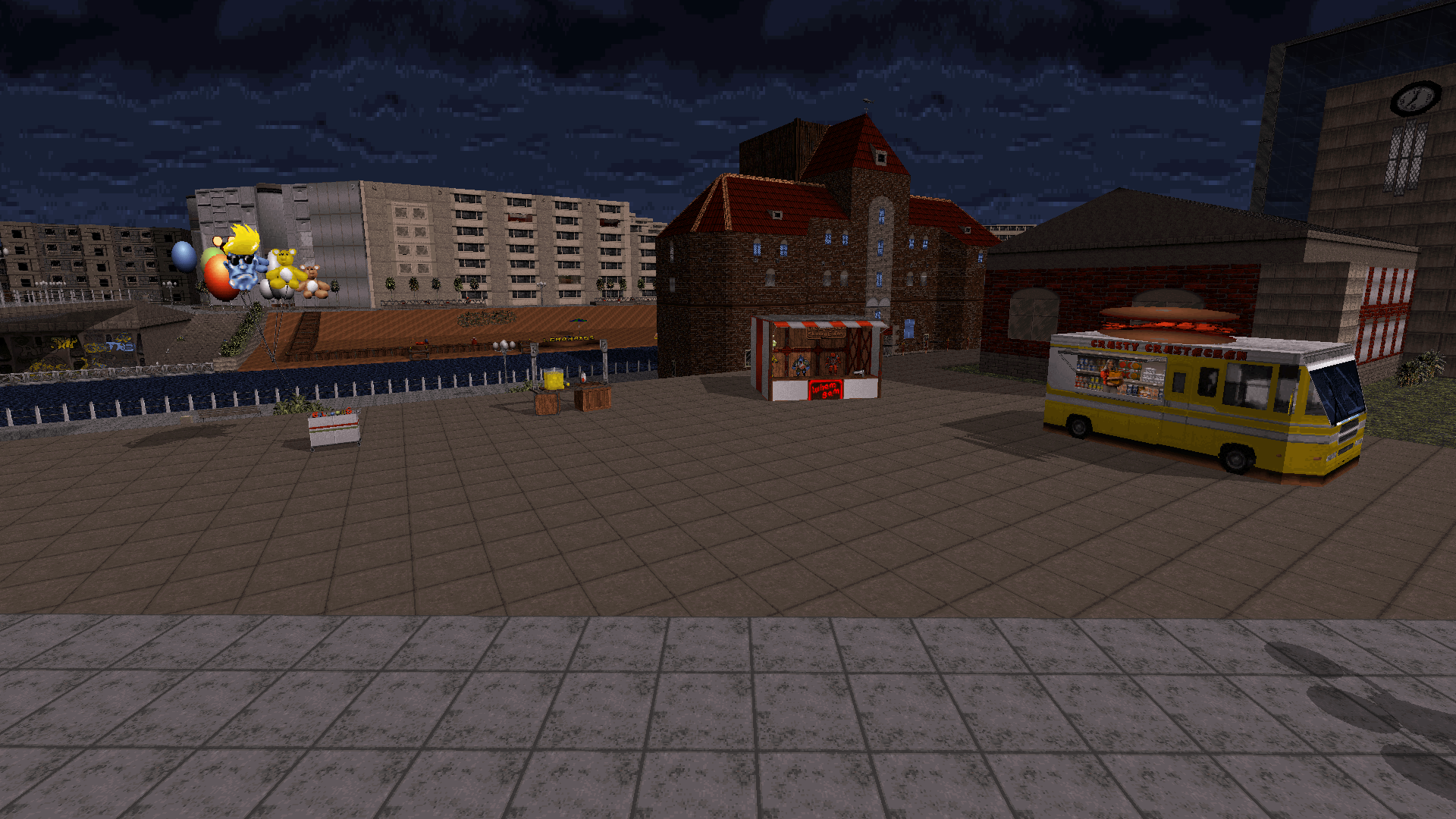
Last but not least, the title reflects my design process itself. The initial idea was to make a level that would feel classic, with plenty of nods and design references to the original Duke 3D levels and even early user maps (which were a large part of my childhood and still feel quite fascinating, even if dated), such as certain texture picks – but at the same time make it overly complex and ambitious “under the hood”, centered around strong sequencing and spectacular effects. This goes as far as to somehow satisfying the once naïve imaginative concept of creating a dream level which would feel completely open and “like real life”. Below are some of the more direct inspirations for certain buildings and effects present in the map.
The central effect of the level, which is raising the water level in the river after solving a simple puzzle, followed by a boat cruising in, from which you retrieve a crucial item, is directly inspired by the legendary Point & Click Adventure game The Mystery of Time and Space (MOTAS) by Jan Albartus. This was one of the key elements on which the initial premise of the level was based. Ironically, the simple motif of a boat passing under a bridge is yet another trope which plays with my personal understanding of the dream level idea – this time, referencing a memorable mission from the original Grand Theft Auto (1997), where you had to toss a briefcase from a bridge to a motorboat passing underneath it, which always made me wonder if it was possible to traverse the water boundaries in that game. Here are some comparison screenshots between MOTAS and Simpler Times.
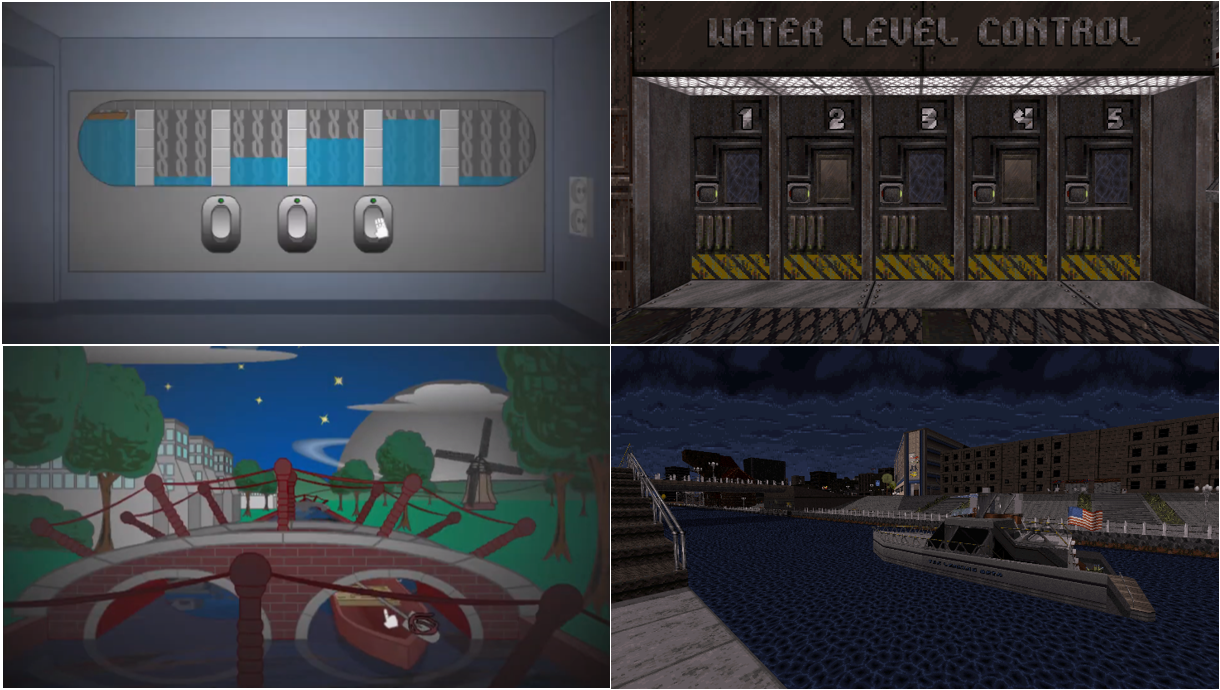
Several buildings in the map are Build reinterpretations of real-life ones, with the most distinct one being the docking crane in the central part of the map, which you visit to retrieve the blue keycard. It is based on The Crane, National Maritime Museum building in Danzig, Poland. Below are comparison photos of the original and its recreation – obviously only the external façades were inspired, while the inside was completely my own invention. The surrounding architecture was not recreated either, as – luckily – the level does not have to obey the strict urban planning regulations.

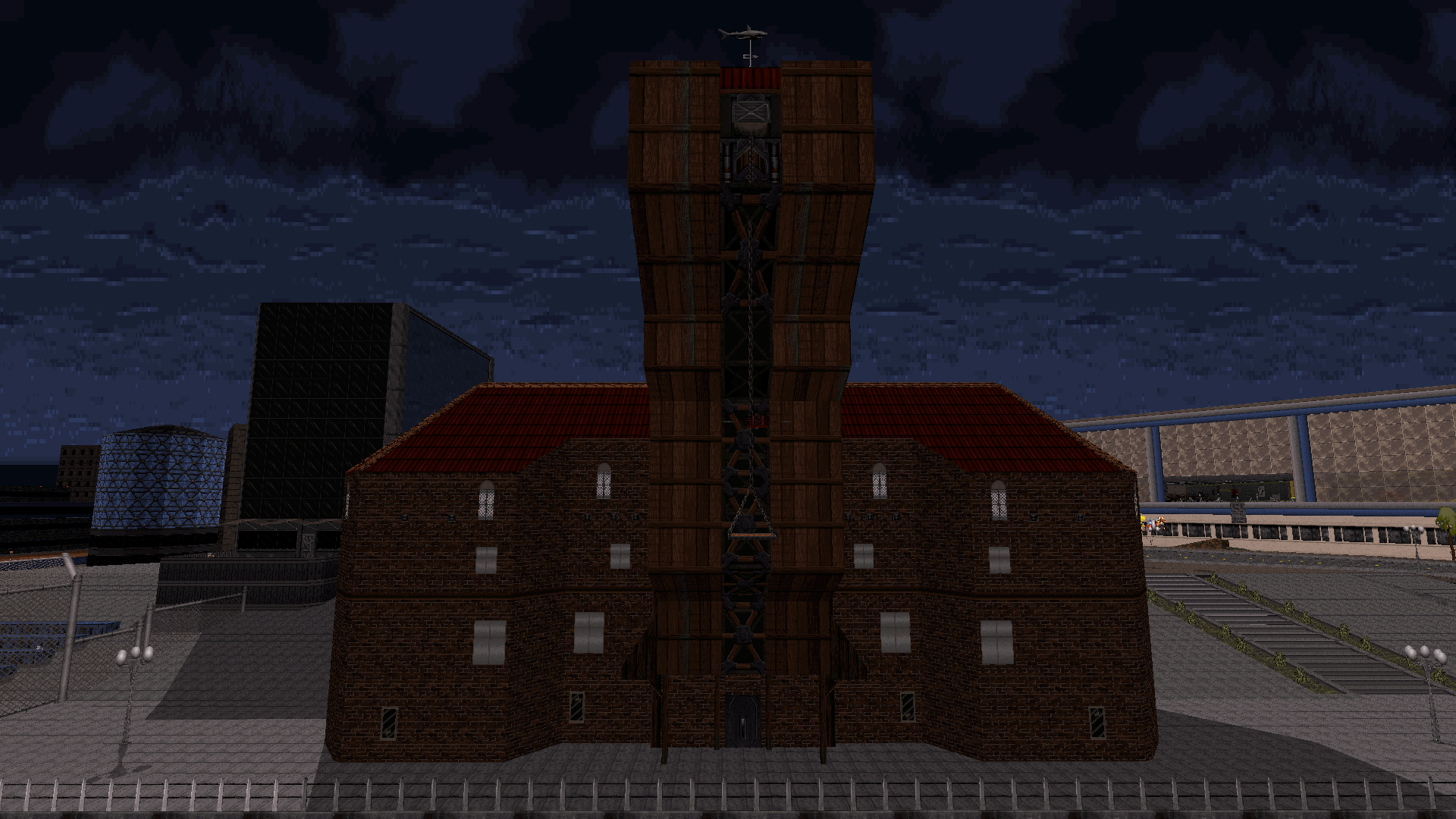
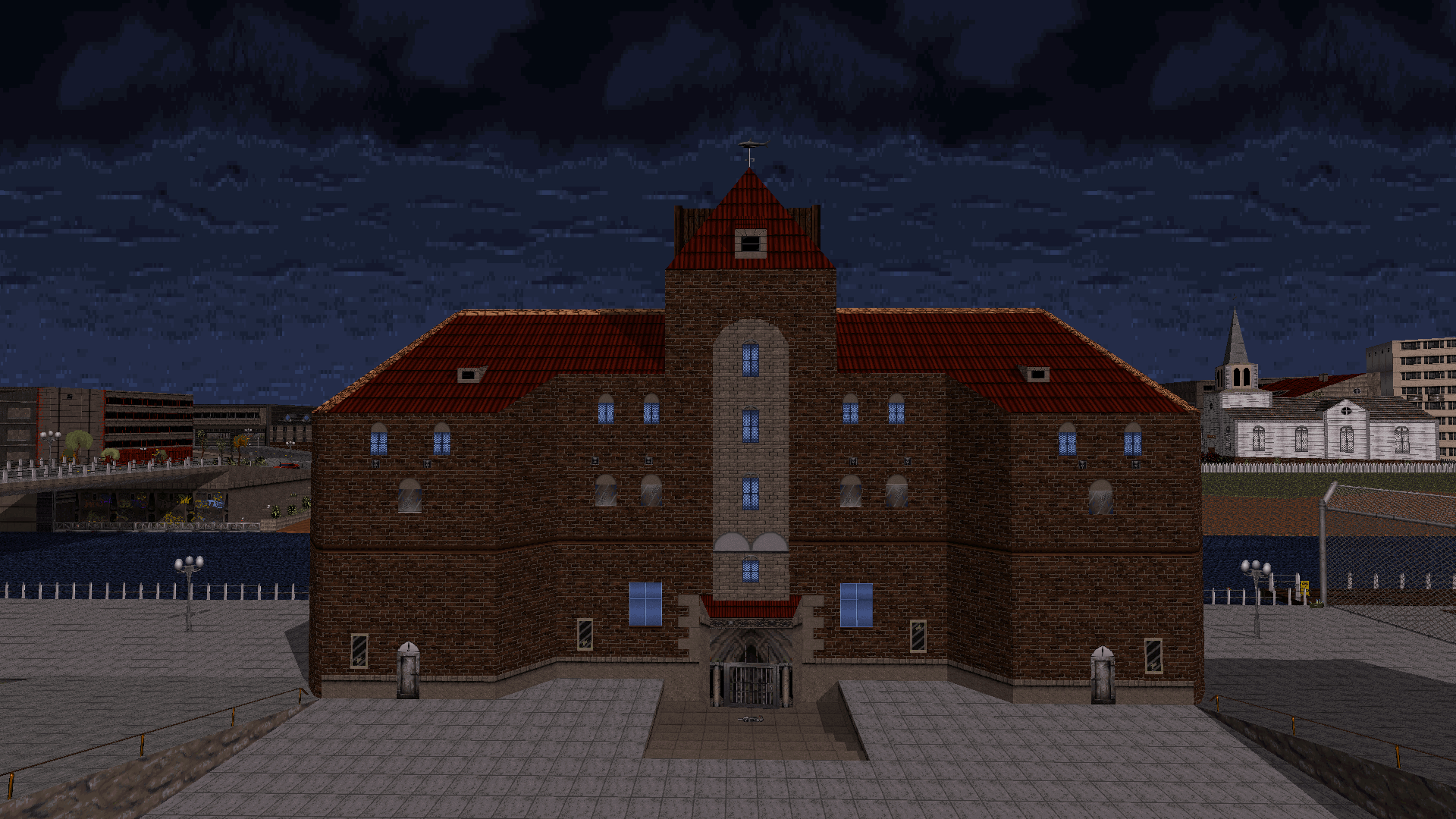
The church you can see in the distance is based on traditional American white wooden churches. In particular, I used photos of the Waterbury Congregational Church in Vermont (originally dating back to 1824) for reference. The message on the sign in front of the church, which might be difficult to read from within the game, is unironically an actual message once presented by the Bella Vista Baptist Church in Florida…
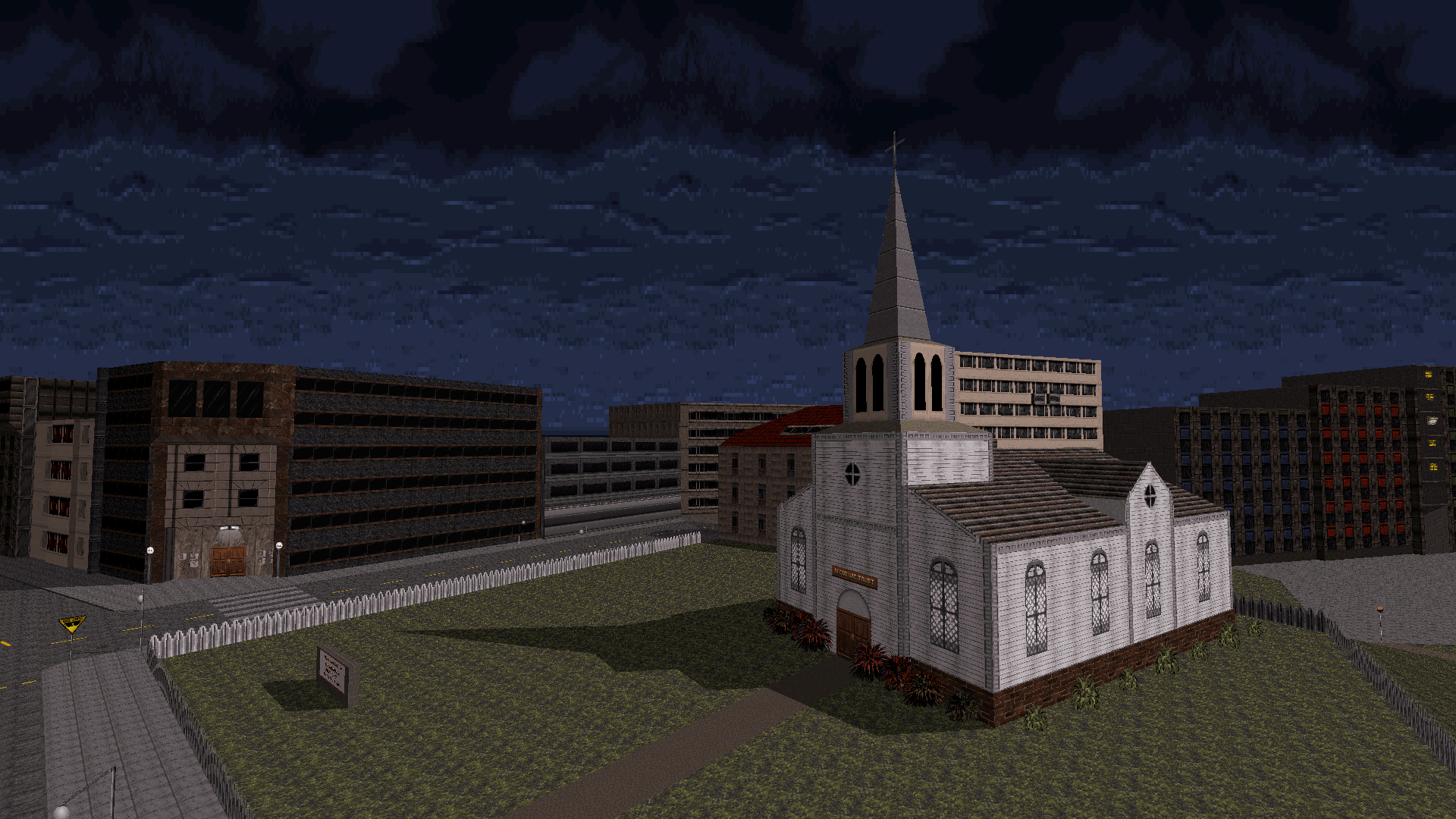
The building between the docking crane and main street is based on another landmark, an art deco Old Docks House located in Preston, England. This building lends its architecture particularly good towards a Build Engine reinterpretation due to mostly blocky, regular geometry and fairly simple “texturing” of the façade. Comparison can be seen below.
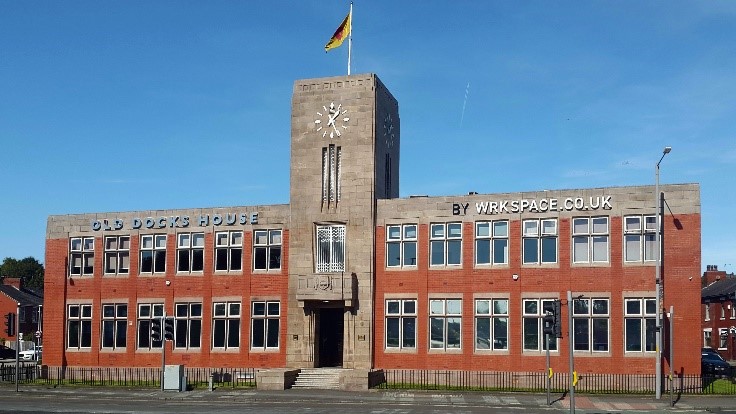
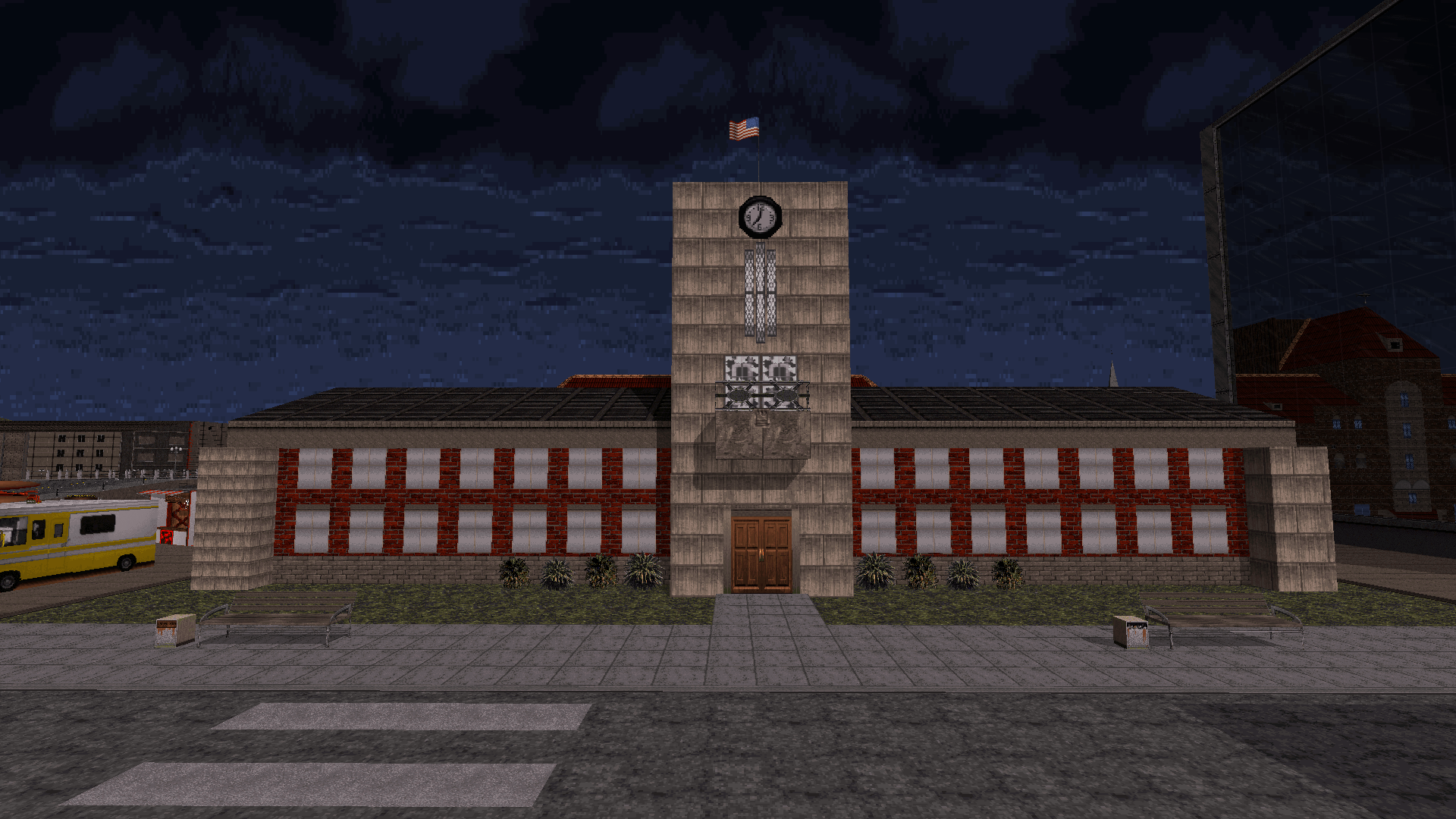
Some of the other buildings that are located outside of the player area were also loosely inspired on real-life architecture – there is one based on the 30 St Mary Axe in London (more commonly known as The Gherkin), designed by Norman Foster and Ken Shuttleworth and one based on the .KTW office building in Katowice, Poland. The hotel lobby was heavily inspired by studying a lot of different photos of such places – some of these inspirations were already detailed in one of my previous maps, Submachine, where I used the same type of angled hanging ceiling lights.
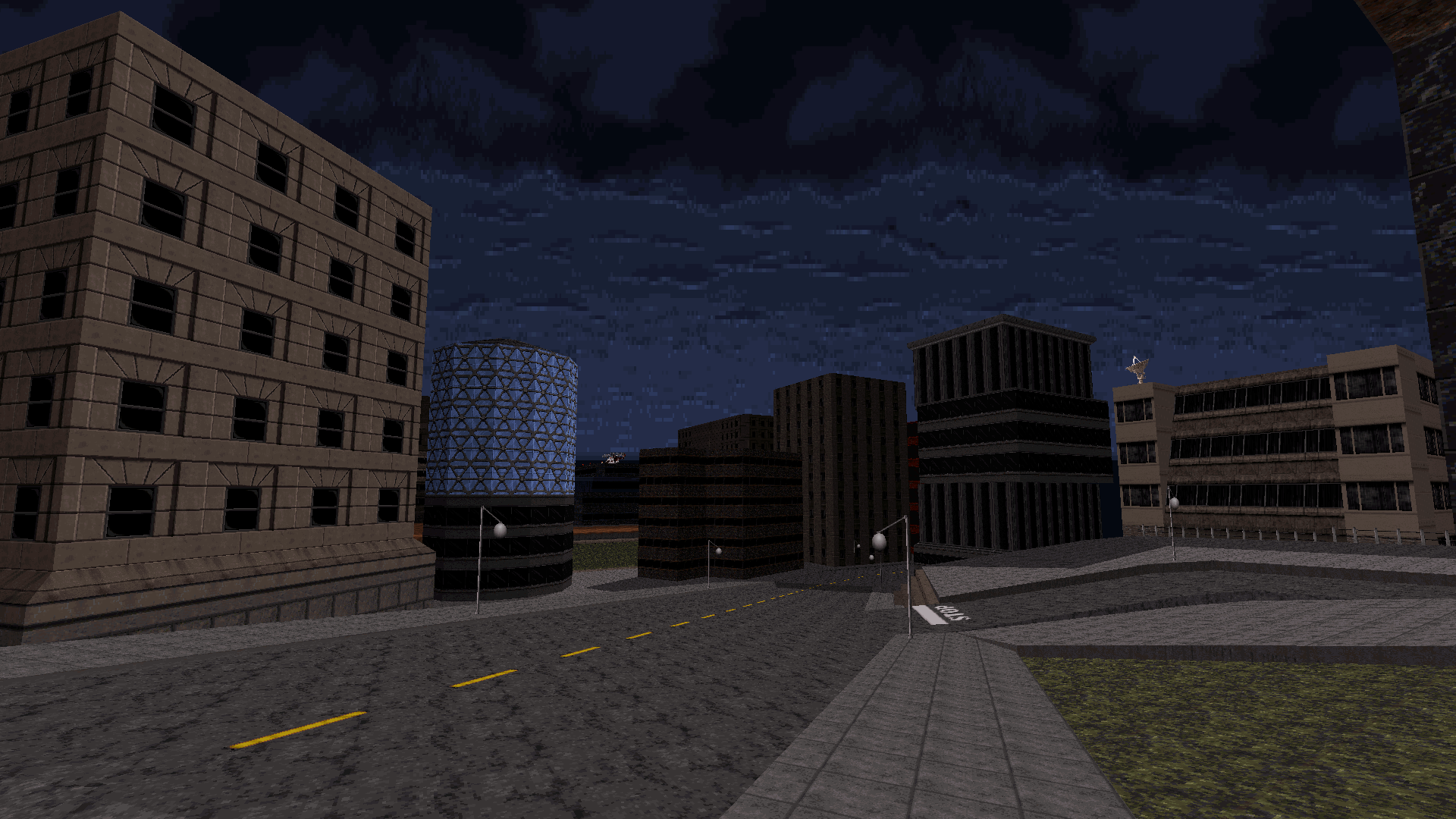
Duke’s boat – The Leaking Beta – was based on various stock images of yachts and motorboats found around the Internet. Similarly, the red car parked next to the bridge is based on Ferrari model 308 GTS. Some comparison photos are shown below.
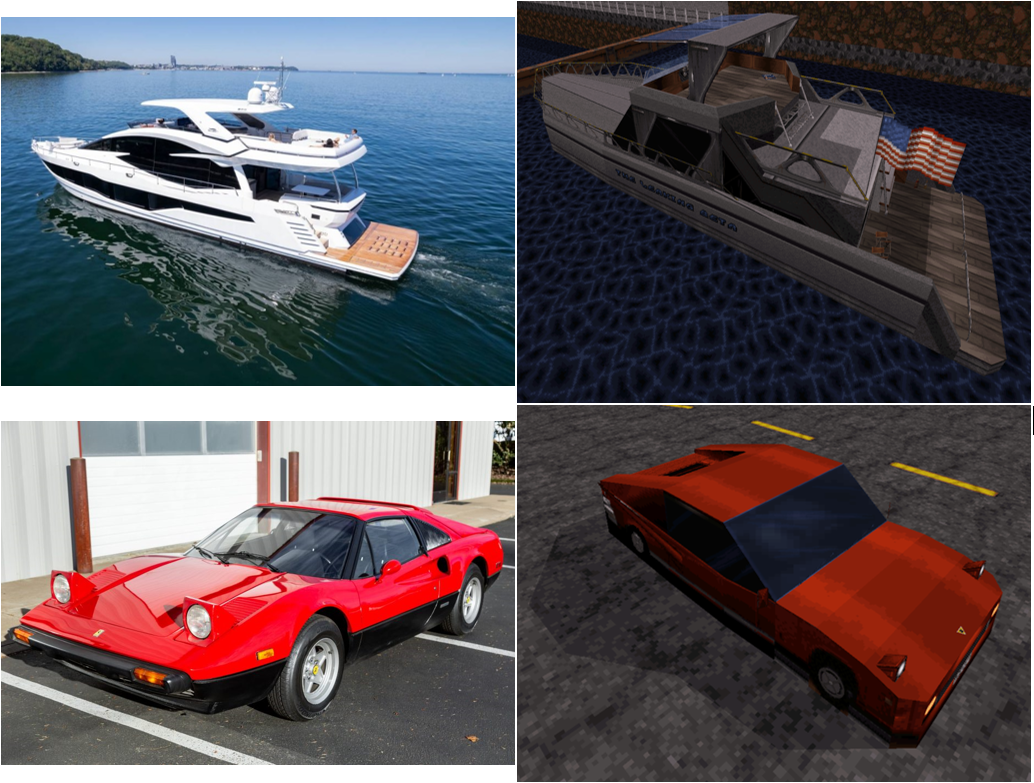
Another architectural detail which might not come as obvious during regular gameplay is the shape of the water fountain located next to the restaurant. Its design is inspired by the works of M.C. Escher. From certain perspectives, it can be perceived as an “impossible object”, an optical illusion where something is instantly perceived as a representation of a 3D object, but cannot exist as such. In this case, this is based on a simple play with perspective between similarly looking objects where the contours are difficult to detect at first glance.
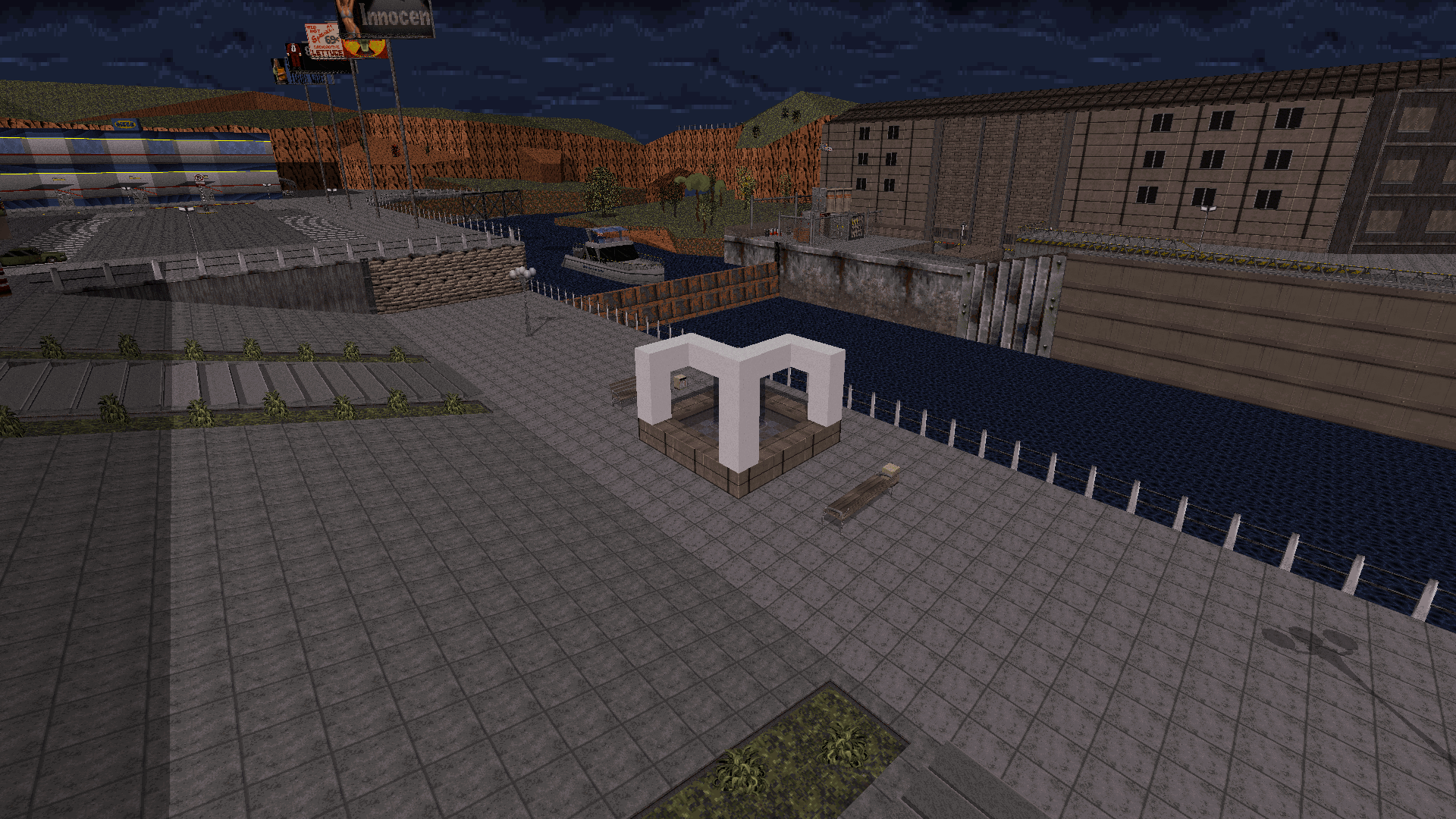
Last but not least, the name of the restaurant, La Sirena, is a reference to the starship SS La Sirena (NAR-93131) from Star Trek: Picard, a vessel commanded by captain Cristóbal Rios. Adequately, the interior of the place is decorated in pictures of foreign planets and star systems. Furthermore, the joint serves mediterran cuisine, which is not a typo…



Love the write-up, particularly the homages to different architecture and the reasons behind it!
I've never played a duke nukem but this was a cool read; keep up the great artistry Ledsbourne :)
Thanks, glad you enjoyed reading it :) It's really cool when even people who never played the game can appreciate such stuff!